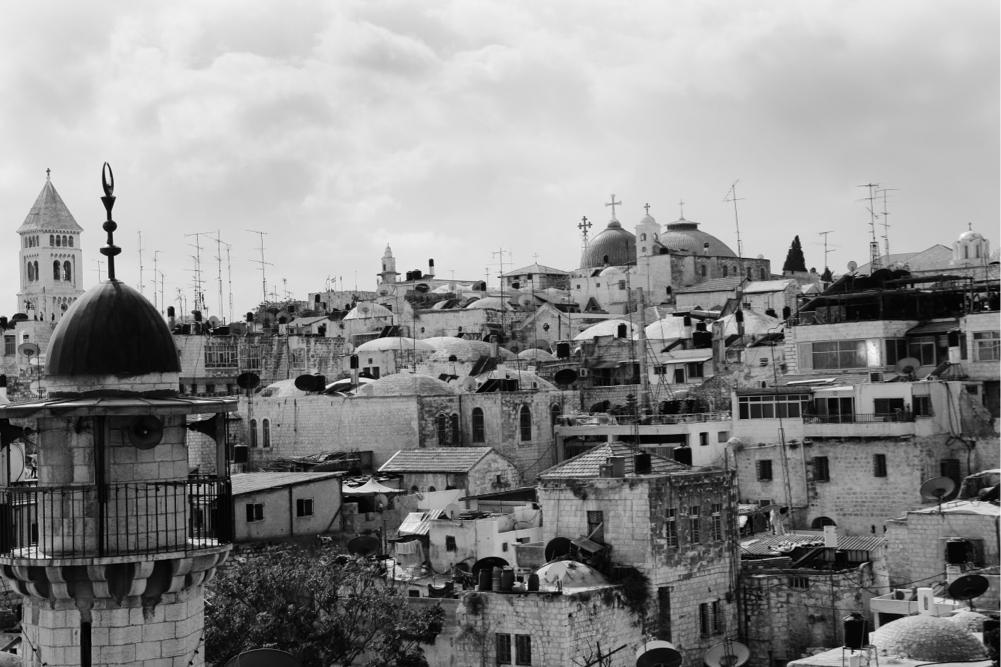As the fighting intensified, my parents, with my Aunt Leonie and Cousin Joseph, who was then twenty-four years of age and lived with us, gathered up as many of their possessions as they could, locked the house, and took the bulky iron keys with them. They were hoping to find refuge in the Old City of Jerusalem for a couple of weeks and then to return after the fighting subsided. But their hope never materialized because Jerusalem was divided and the western neighborhoods, including Qatamon, became part of West Jerusalem, which was claimed by Israel as its capital. Our home, built in 1937, was expropriated by the Absentee Property Authority in Israel. In effect, this meant its transfer to newly arrived Jewish immigrants to Israel . . . .
My parents had no choice but to seek refuge somewhere; they eventually opted to go to Lebanon, where they settled in Ghazir, a small village by the Mediterranean. We lived in Ghazir for a whole year on the savings of my father, who had managed to withdraw his assets from the British Bank of the Middle East, which was previously known as the Ottoman Bank. Ghazir was a small community of Maronite faithful, many of whom attended daily Mass. Ghazir was home to the Maronite Patriarchal Seminary, where mostly young Lebanese Catholics of the Maronite rite were trained to become priests. My father, a devout Catholic, went to Mass every day, and this was the reason why the villagers of Ghazir loved him and welcomed us in their midst.
The tension between Lebanese and Palestinians was always high, particularly as thousands of Palestinian refugees, like my family, found their way to Lebanon following the eruption of Arab-Israeli fighting in 1948. This tension was not simply related to the difference in nationality but also to the fact that the majority of Lebanese Christians at the time were fearful that an influx of Palestinians, mostly Muslim, would unsettle the religious balance between Christians and Muslims in the country. This sensitivity still persists, unfortunately, and is dealt with by restricting Palestinians to the refugee camps in which they live, including the Palestinian Christian refugee camp of Dbayieh, north of Beirut, not far away from Ghazir. In addition Palestinians are barred from employment in almost seventy professions, such as medicine, in order to prevent them from integrating into the Lebanese setting. Some advocates for the right of Palestinians in Lebanon to job opportunities argue that if the Palestinian refugees remain poor and unemployed, the likelihood that they would leave Lebanon and go back to the West Bank would remain slim. If they are working and earning a decent income that would enable them to stand on their own two feet, then the likelihood that they would opt to go back to the West Bank and start anew would be much greater.
As Father’s savings dwindled after a year’s stay in Ghazir, and as he had no means of finding employment in Lebanon, the family moved on to Bethlehem. The trip from Ghazir to Bethlehem was accomplished with a hired taxi. The driver, a Syriac Orthodox Christian from Bethlehem, used to travel the Beirut-Amman-Jerusalem-and-Bethlehem road regularly. I remember that as we approached Bethlehem, a fight broke out between our driver, who was hot-headed, and some road construction workers who had asked him to stop. My father intervened and calmed the situation, but the screaming and yelling made me afraid . . . .
In Bethlehem, the family rented one room, which I still pass by on my way to the Nativity Church through the narrow serpentine alleys of Bethlehem, and we lived there, the nine of us. But the problem of employment for my father remained since Bethlehem of the early fifties was more like a village than a flourishing town and even the small number of pilgrims and tourists who arrived, although in general wealthier than present-day pilgrims and tourists, did not contribute much to improve the economic prospects and prosperity of the village where Jesus Christ was born. Besides, the arrival of thousands of refugees as a consequence of the 1948 war meant that the economic and social pressures on Bethlehem were tremendous. The newly arrived refugees were housed in three camps around Bethlehem: Dheisheh, Al ‘Izzeh, and Ayda . . . .

